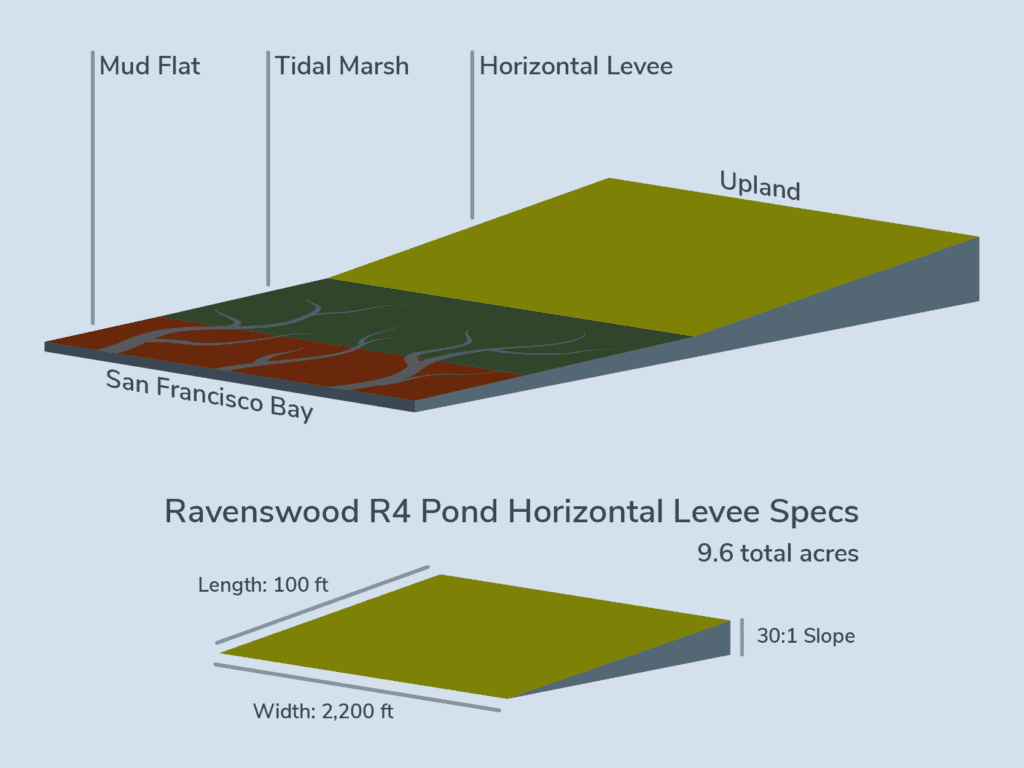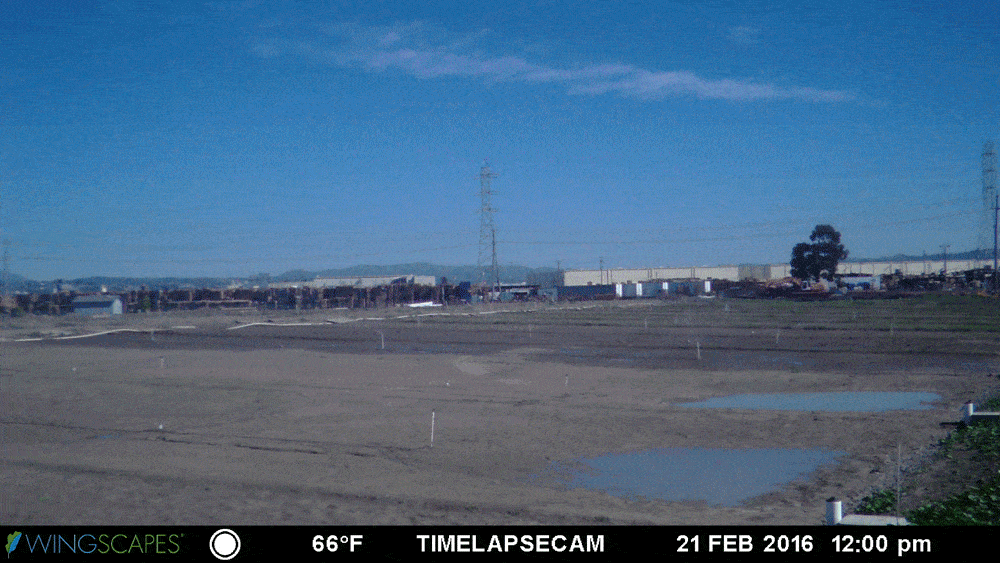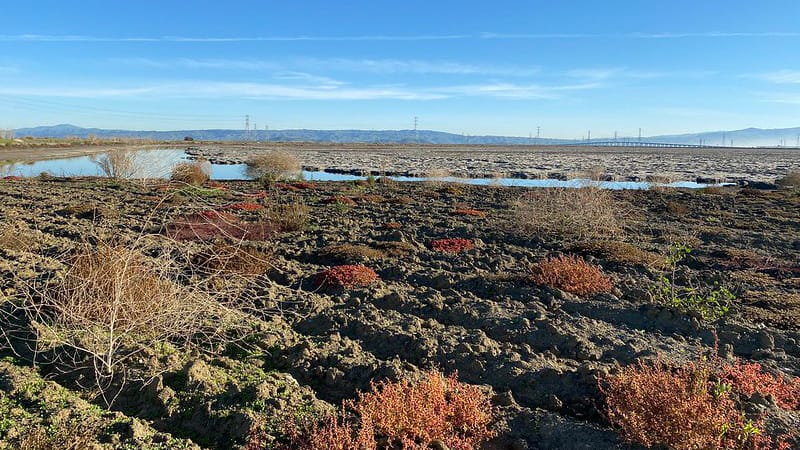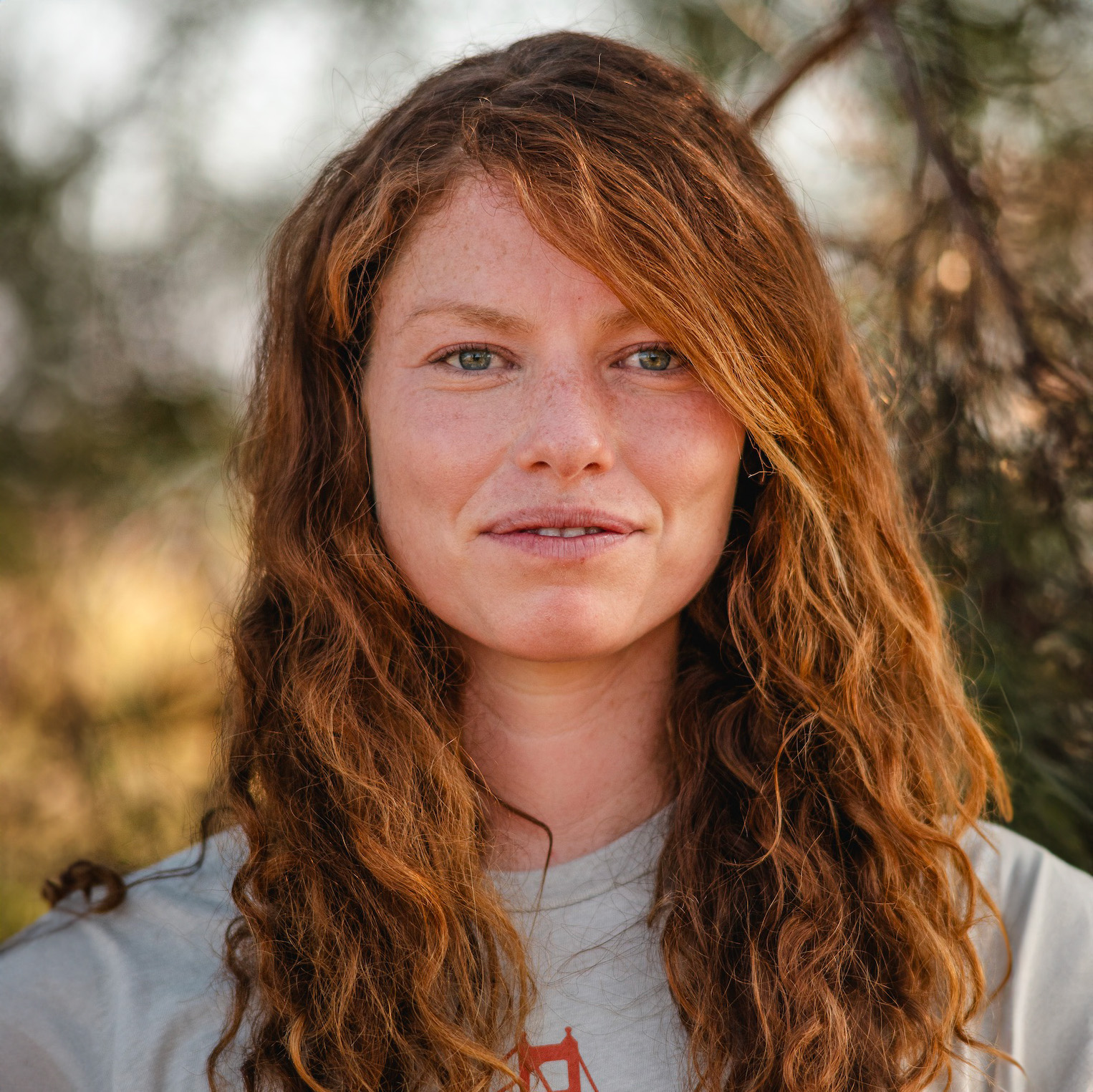
 You may have heard the term “horizontal levee” used to describe some of Save The Bay’s restoration work. “Levee” evokes something high and hard, like a dike or reinforced embankment, to stop water from encroaching on land. So how can a levee be horizontal – and what is a horizontal levee?
You may have heard the term “horizontal levee” used to describe some of Save The Bay’s restoration work. “Levee” evokes something high and hard, like a dike or reinforced embankment, to stop water from encroaching on land. So how can a levee be horizontal – and what is a horizontal levee?
Horizontal levees are wide, gently sloping, vegetated buffers of land that prevent water from moving inland. Instead of traditional, mounded, narrow levees or hardened structures, horizontal levees are a nature-based solution to protect communities from flooding and sea level rise. Combining a gradual incline of land with tidal marsh, horizontal levees reduce flood risk through wave attenuation and vegetative protection. By growing plants suited for the habitat transition zone on a slope, horizontal levees are better suited to adapt to rising sea levels.
Horizontal levees combine the function of a levee with restored native habitat along the slope. The native vegetation supplies refuge for local wildlife and filters pollutants from higher in the watershed or, for some horizontal levee projects, treated wastewater.
Our work with Horizontal Levees
 In 2015, Save The Bay worked on a horizontal levee project at the Oro Loma Sanitary District Treatment Plant. The Oro Loma Horizontal Levee Demonstration Project is an exciting experiment looking at ways to combat regional impacts from sea rise and provide conditions to research the efficacy of wastewater filtration. In this project, Save The Bay worked in partnership to collect over 4 million seeds and propagated over 70,000 plants in our nurseries and raised beds. Over 200 volunteers helped us successfully plant along the horizontal levee.
In 2015, Save The Bay worked on a horizontal levee project at the Oro Loma Sanitary District Treatment Plant. The Oro Loma Horizontal Levee Demonstration Project is an exciting experiment looking at ways to combat regional impacts from sea rise and provide conditions to research the efficacy of wastewater filtration. In this project, Save The Bay worked in partnership to collect over 4 million seeds and propagated over 70,000 plants in our nurseries and raised beds. Over 200 volunteers helped us successfully plant along the horizontal levee.  Save The Bay is currently working to vegetate 9.6 acres of a horizontal levee at the Ravenswood complex of the South Bay Salt Pond Restoration Project near Menlo Park. The project will expand to include a nearby stretch of shoreline, eventually greening 25 acres in total. Because of the large-scale nature of this project, Save The Bay is combining traditional restoration methods of planting native species by hand and spreading seed mixes, with new strategies utilizing farming equipment to help spread the rhizomes of native grasses and forbs throughout the area.
Save The Bay is currently working to vegetate 9.6 acres of a horizontal levee at the Ravenswood complex of the South Bay Salt Pond Restoration Project near Menlo Park. The project will expand to include a nearby stretch of shoreline, eventually greening 25 acres in total. Because of the large-scale nature of this project, Save The Bay is combining traditional restoration methods of planting native species by hand and spreading seed mixes, with new strategies utilizing farming equipment to help spread the rhizomes of native grasses and forbs throughout the area.
https://www.kneedeeptimes.org/half-a-dozen-horizontal-levees-in-the-works/ https://archive.estuarynews.org/estuary-news-nudging-natural-magic/?swcfpc=1 https://oroloma.org/horizontal-levee-project/ https://www.sfestuary.org/truw-pahlp/ https://www.mercurynews.com/2013/02/22/bay-area-environmental-group-proposes-hybrid-levees-for-bay/ https://bayecotarium.org/about/the-bay-institute/bay-restoration/horizontal-levee/ https://www.kqed.org/quest/54442/wetlands-horizontal-levees-sea-level-rise

















































